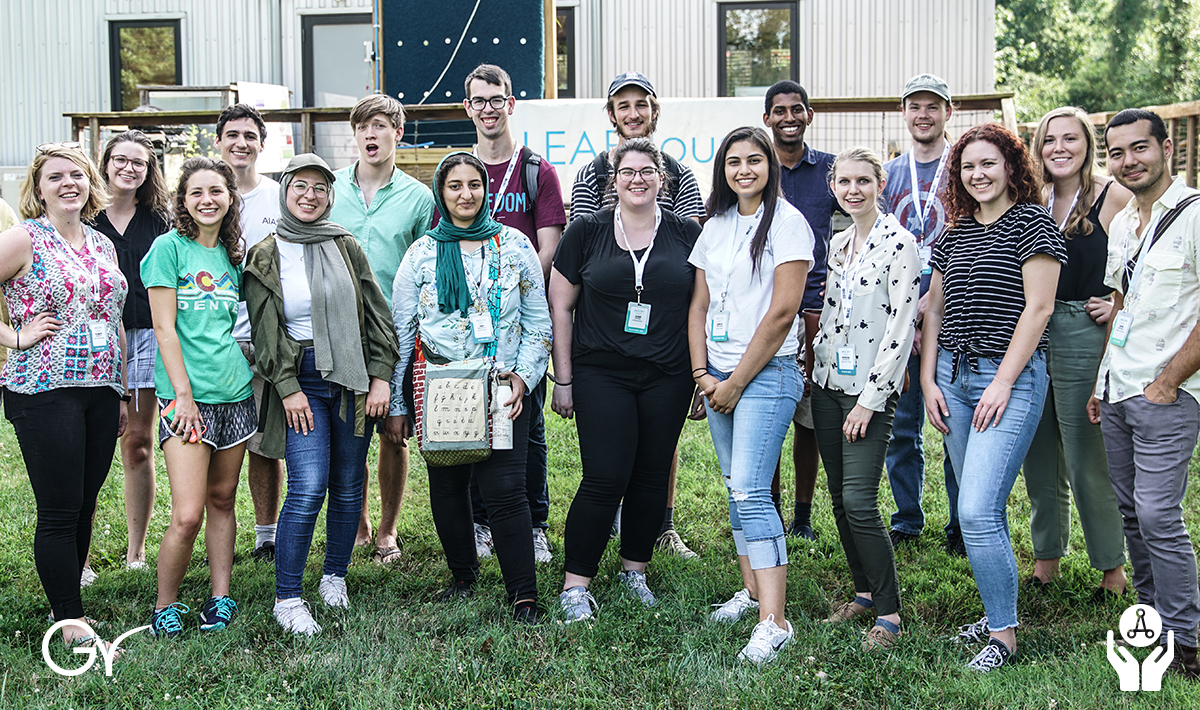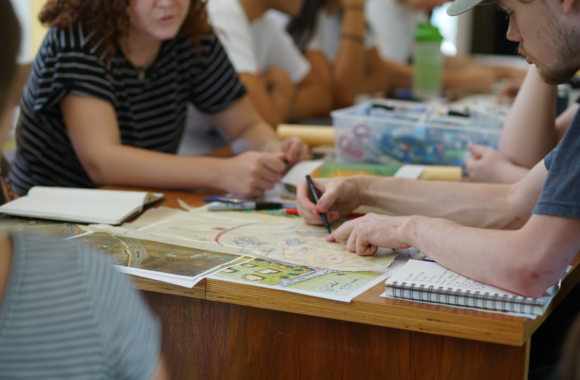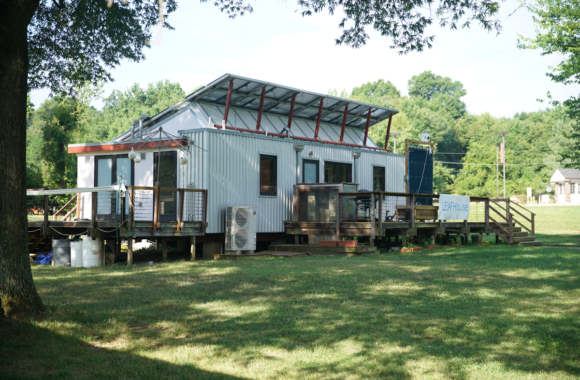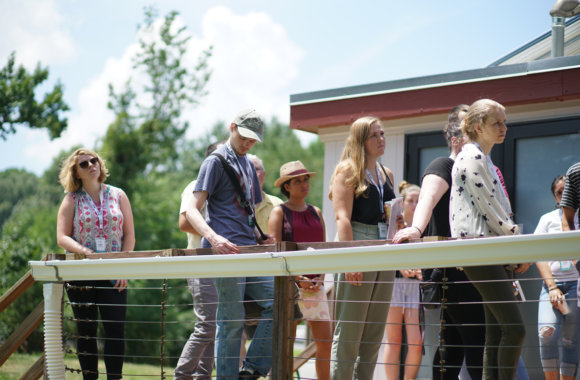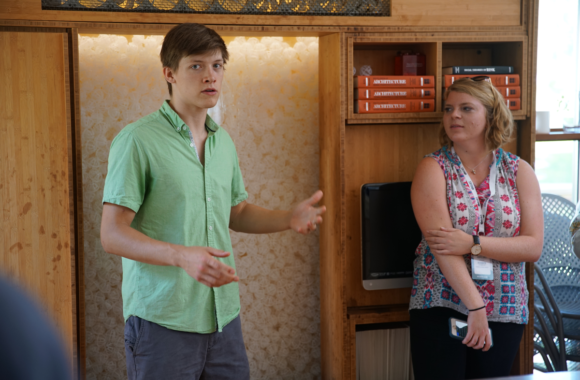This summer, Freedom By Design at the National AIAS Office had the opportunity of collaborating with students at the University of Maryland, University of Maryland’s Office of Sustainability, and the AIA Potomac Valley chapter to design the layout of a concept called SPARC – a Sustainability Park and Academic Research Center. Located at one of the entrances to the University’s campus, the 3.5 acre area currently holds two Solar Decathlon houses, including the 2007 2nd place project, LEAFhouse. This space and the surrounding green area serve as a meeting and event place for the Sustainability Cooperative at the University of Maryland, known as SCoop, and the many different sustainability-oriented groups that comprise it like their AIAS chapter, Engineers Without Borders, the American Ecological Engineers Association, and more. It is their hope and vision to turn this area into a space where more people can come to learn more about sustainable lifestyles and technologies through demonstration sites and other features.
For this special 15th Anniversary Freedom By Design Live, a task force was assembled. Comprised of ten students from different AIAS and FBD chapters across the country, students representing SCoop and the different groups they are apart of at UMD, and staff from the Office of Sustainability, the team included a variety of backgrounds and disciplines. Mr. Bo Green, the president of PVAF, started the day off by giving a tour of the facilities and explaining the conception of SPARC and the vision for what it could be.
Our first of three charette sessions that day focused on reevaluating the 3.5 acres of the site and the “rough draft” design plan that had been drafted by PVAF about a year prior. The group divided up naturally and proposed many interesting ideas for what could be added to the plan keeping in mind the environmental factors from a student perspective. Many of the ideas called for a community style arrangement while others focused on the interactive programs that could be implemented, but mostly, they were focused on the site’s access and appeal and how sustainability and architecture could be combined in.
Despite the heavy heat that day, the participants excitement to check out the various demonstrations put up around LEAFhouse was not burnt away. These demonstrations displayed different sustainable technologies and productivity of sustainable engineering and construction. Each vendor took a turn presenting their findings and products that are currently changing the face of sustainable practices and furthering their potential. The participants were inspired to learn about these new technologies and student investigations such as Living Canopies, algal turf scrubbers, solar powered water fountains, ROCKWOOL, and other studies.
Following the demonstrations, we got back to designing the SPARC plan. The next phase was to brainstorm what exactly would be the most reasonable and strategic first phase to install within a year. The groups revisited ideas from the first charette in their proposals for this phase such as installing a pedestrian path, materials shed, water collection, a farmer’s market space, bus shelter, bird houses, information center, bee hives, community gardens, etc. as great first moves to really introduce the space to campus and community. Since the site is on the edge of campus and currently the most prominent obstacle is getting people to the LEAFhouse, we determined that the bus shelter and pedestrian path were the most sensible first moves and we proceeded to split up into two groups and create some rough conceptual sketches for both options. The group working on the bus stop imagined a trellis/gazebo type structure bus shelter that combines water and solar collection. The path group was curious about how to design an interactive shade structure that combines with bike storage and shading and seating. The conversation was clearly directed in structures and programs that are multifunctional and responsible to the environment. Each charette that day was packed with lots of creative thinking and energetic discussion as we considered sustainable methods for influencing the campus.
Overall, the day was a great start to a long relationship for the FBD National office and the innovative ideas at the University of Maryland; this day inspired our visiting FBD leaders to come back to their campuses with the enthusiasm to create and emphasize sustainable movements on campus and in their local communities through architecture.
What can you expect to see in the future? We will continue to operate as a task force in the coming year to work towards accomplishing the project goals we set out at the end; the pedestrian/bike path and the bus shelter. We hope to continue this event next year with a day similar to this where students from across the nation and those on from UMD can come together to install the first phase of the SPARC project and continue planning and designing the next phase, so that we can make this a yearly partnership between AIAS and SCoop. Stay tuned for updates and progress on the project itself!









